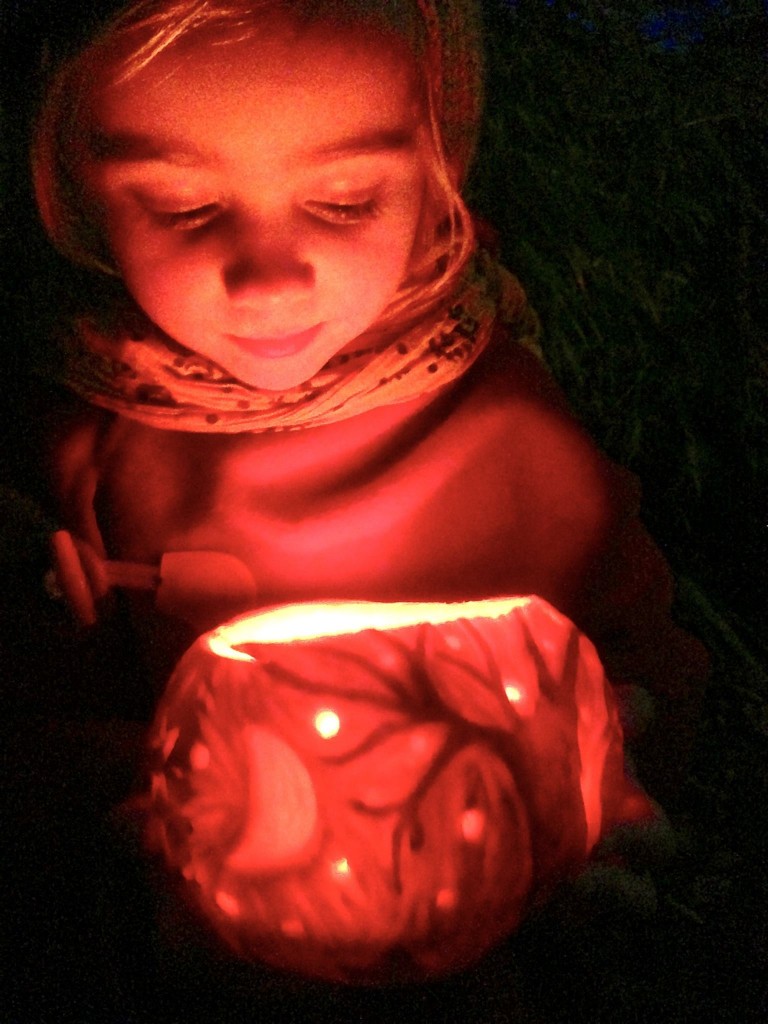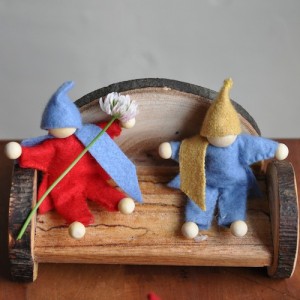Martinmas, or the festival of St. Martin, is celebrated around November 11 in Waldorf schools with a nighttime lantern walk–often with songs followed by autumn treats.
Like Halloween, Martinmas is rooted in Christian ritual but is now more of a cultural event, anticipated by children in many European countries. The essence of the holiday—marking the end of the fall harvest and the advent of snowy weather—reminds us that through all of life’s outward changes we maintain within us the warm light of our spirit.
Martinmas dates back to the Middle Ages and the veneration of St. Martin, a 4th-century bishop who founded an abbey in Tours, France. Martin was a Roman horse soldier who converted to Christianity; according to legend, one wintry day he encountered a shivering beggar and cut his cloak in half to give the poor man warmth. That night, Martin had a vision of Jesus wearing Martin’s divided red cloak. Martin is now the patron saint of tailors, as well as that of France.
Traditionally, Martinmas coincided with the many busy activities around farms in late fall. Any remaining late crops in the fields, such as winter squash, would be harvested before the deep snow falls; it was also the time to plant winter wheat, which came up in early spring and provided flour for the new year.
The bounty of the late harvest, fresh wine, and the slaughter of animals naturally suggested a feast day. As such, Martinmas was a precursor to the American holiday of Thanksgiving, and is still marked in Europe with sumptuous meals, often of roast goose. In Germany, suckling pig is prepared in the town square.
Centuries ago, bishops in some European countries ordered fasting for several days a week from Martinmas to Epiphany—a period of 56 days. Among the more unusual Martinmas traditions no longer observed was the invocation in Ireland that no wheel shall turn on the feast day—in respect for the fact that Martin was killed by being tossed into a mill stream and crushed under the paddlewheel.

Today in many European countries, the Martinmas festival culminates in a lantern walk at night, followed by a bonfire and songs. Traditionally the lanterns were carved out of newly harvested squash gourds, and illuminated with a candle—the origin of our jack-o-lantern—but can also be made of paper or jars. The lanterns and the bonfire symbolize light in the darkness of winter, and give hope to the poor through the good deeds of St. Martin.
In America the holiday is not commonly observed, although the city of St. Paul, Minnesota has a public Martinmas lantern parade around Rice Park. The tradition of Martinmas has been maintained in the New World primarily by Waldorf schools.
From a child’s point of view, the best part of Martinmas may be the sweet treats at the end of a lantern walk. In some countries, children go from house to house with their lanterns, “begging” for treats—certainly the origin of our modern Halloween ritual.
If you are not part of a Waldorf school community (or don’t live in St. Paul), you may wish to organize your own family Lantern Walk with friends and neighbors. The books All Year Round and Crafts Through the Year have instructions for making different types of lanterns. The Autumn volume from the Wynstones collection of seasonal books has a number of lantern songs that can be softly sung on your quiet procession.
Last, but not least, don’t forget to have some treats ready when you come inside to get warm after your walk, like hot cider, ginger cookies and apples.
May the generous spirit of St. Martin be with you through the season!

Have you celebrated the season with a lantern walk–either at school or at home? If not, are you inspired to try one? Please share your thoughts and experiences!




7 Comments
Thank you for sharing this tradition with others, Sarah. As a veteran Waldorf teacher, I so appreciate these festivals marking the seasons of the year. Although to some they may seem clothed in religion, really they are celebrating our connection to the earth and to each other.
Exactly, Linda! Even though some of these festivals have early Christian roots, they are not celebrated in a religious way, but rather to mark the seasons of the year and, as you say, to celebrate a connection with nature and community.
[…] Children are encouraged to hold a meditative reverence in their hearts as they venture out into the night carrying lanterns and singing songs in celebration of the divine light that connects us. Learn more about St. Martins Day and Martinmas celebrations in Waldorf education HERE. […]
[…] change we are experiencing and maintain the symbolic warm light of our spirit. Check out the Moon Child Blog to learn more about it! Even if you don’t celebrate this particular festival, making these […]
[…] Schools typically celebrate Martinmas or the Festival of St. Martin. This post on Bella Luna Toy’s blog explains it in a really easy to understand way. It is usually […]
Hi, I really love Bella Luna toys and love lots of the post, activities and products but the information here is absolutely inaccurate I am afraid. This is not where Jack O’Lanterns or Trick or treating come from. These traditions originated in Scotland with the celts, the lanterns were turnips ( neeps) carved out to keep away evil spirits at Samhain ( harvest) Bonfires were also used to ward off spirits, turnips were used with the same idea in mind. The inside of the turnip would be scooped out and a scary face would be carved into the side and a candle would be put inside. People would carry these around after dark on October 31st to protect themselves. Not 11th of November. Much later when scots and irish travelled to the USA , they found pumpkins were much more plentiful and easier to carve and this is what became Jack o’lanterns. As for trick or treating, that originates from Guising or Mumming as it was once called, which began during the Samhain festival. Parents would dress their children up in scary disguises so as to protect them from the evil spirits and the Aos Sí. They would then go door to door in their costume and people would give them offerings of food, again to ward off the evil spirits. Later, in Scotland, the children would do little shows or talent acts on the doorstep. This , again when it crossed the ocean to the US, became trick or treating. Most of the modern day halloween traditions come from Scottish Samhain traditions. At Martinmas except lanterns were also carried in parades and sometimes carved from pumpkins. The most widely accepted reason for lanterns at Martinmas is thought to be as a reference to the Martinmas bonfires, a portable version of the bonfires traditions originating in france and Germany. I feel like a lot of the info given in this post erases the Scottish Celtic culture, my culture, which I find sad and disappointing.
Thank you for this beautiful description Sarah. I am so grateful for all of your advise. As a mom of three I used to be a customer only but recently graduated my Waldorf training and I feel after watching so many of your blogs you are somewhat of a mentor! Do you happen to have a Martinmas story you can share for the children? I am having a hard time finding something I can share for EC.